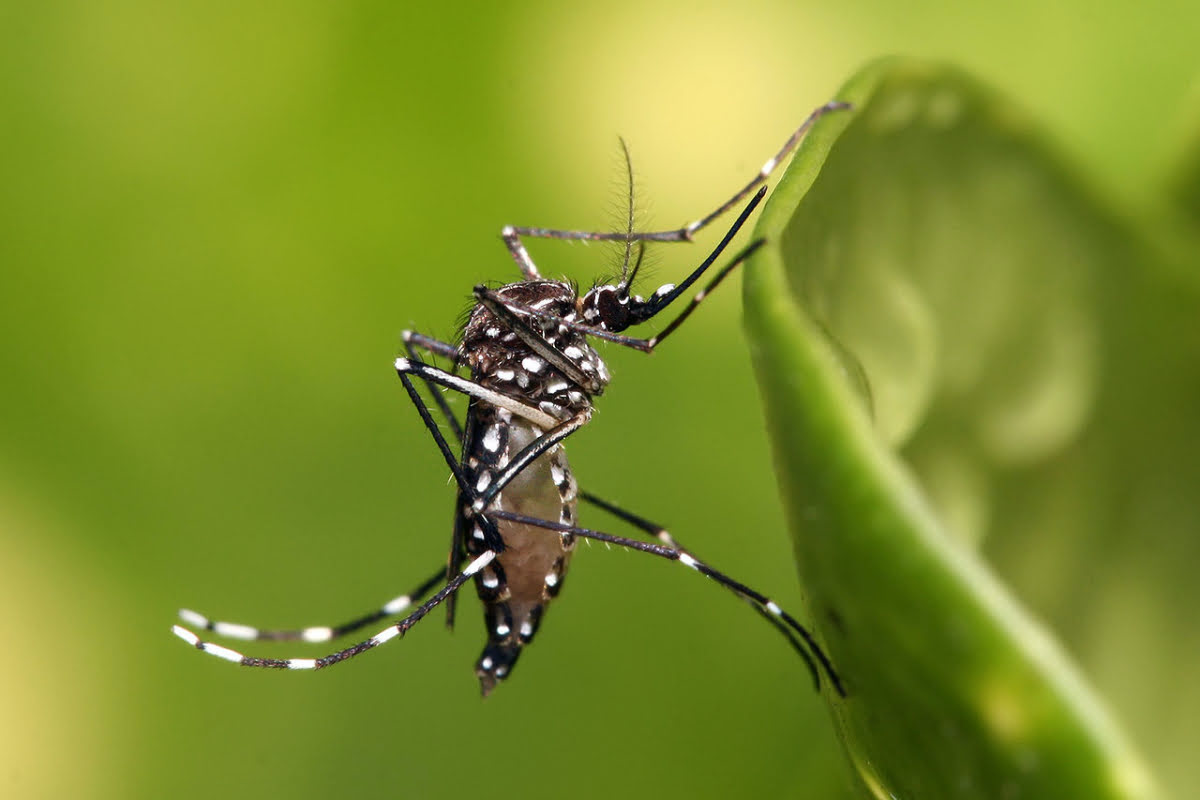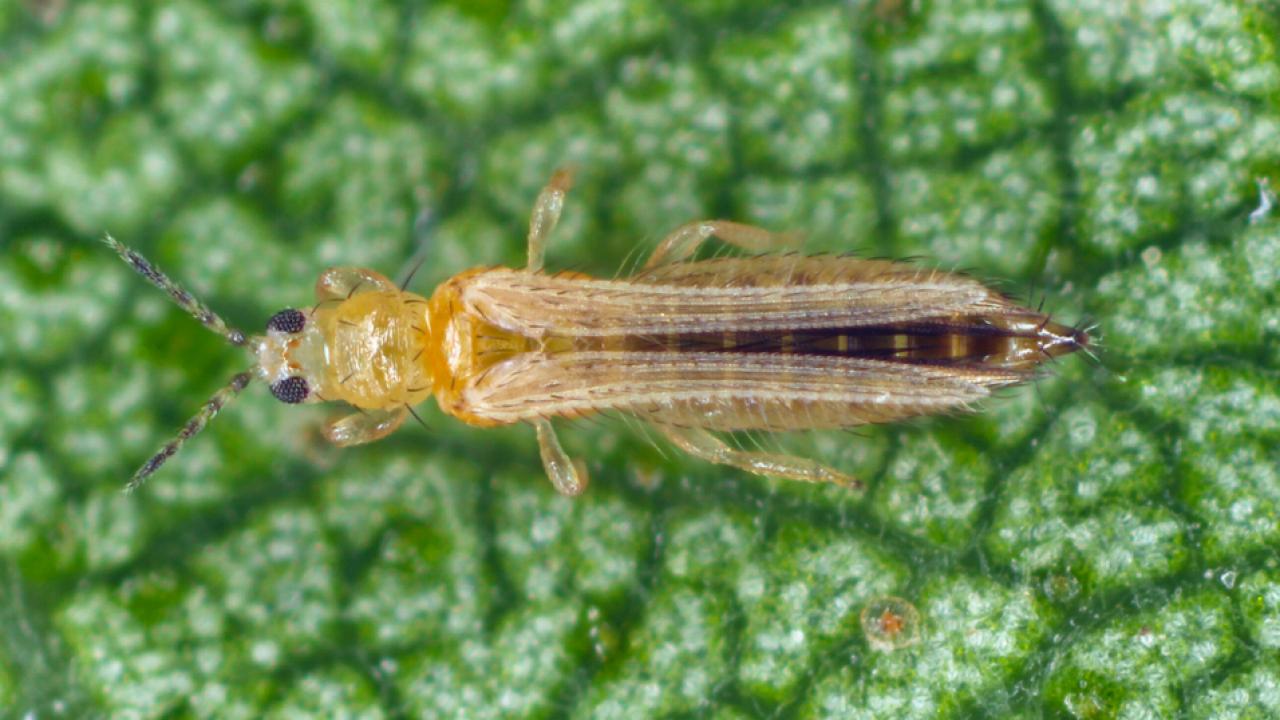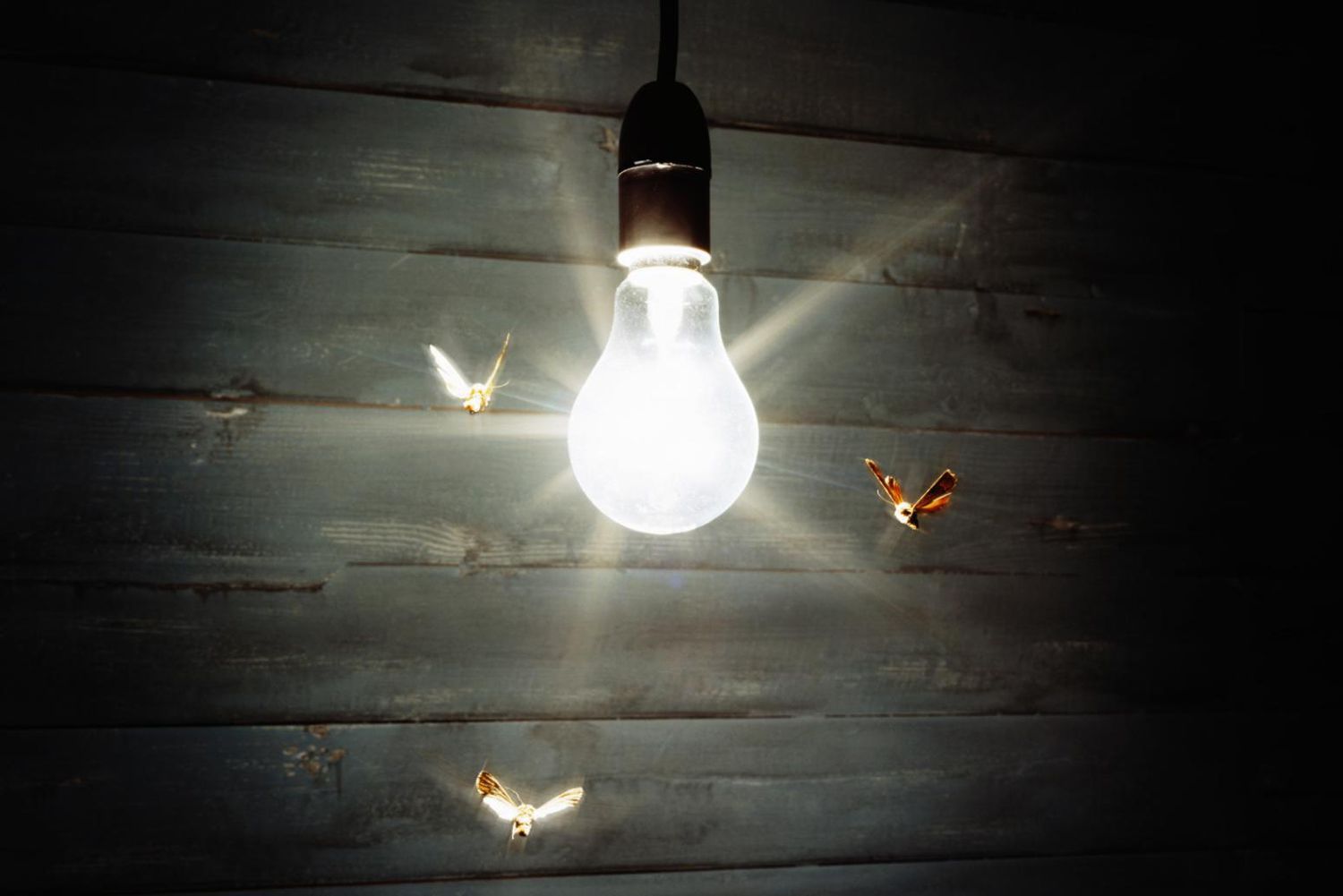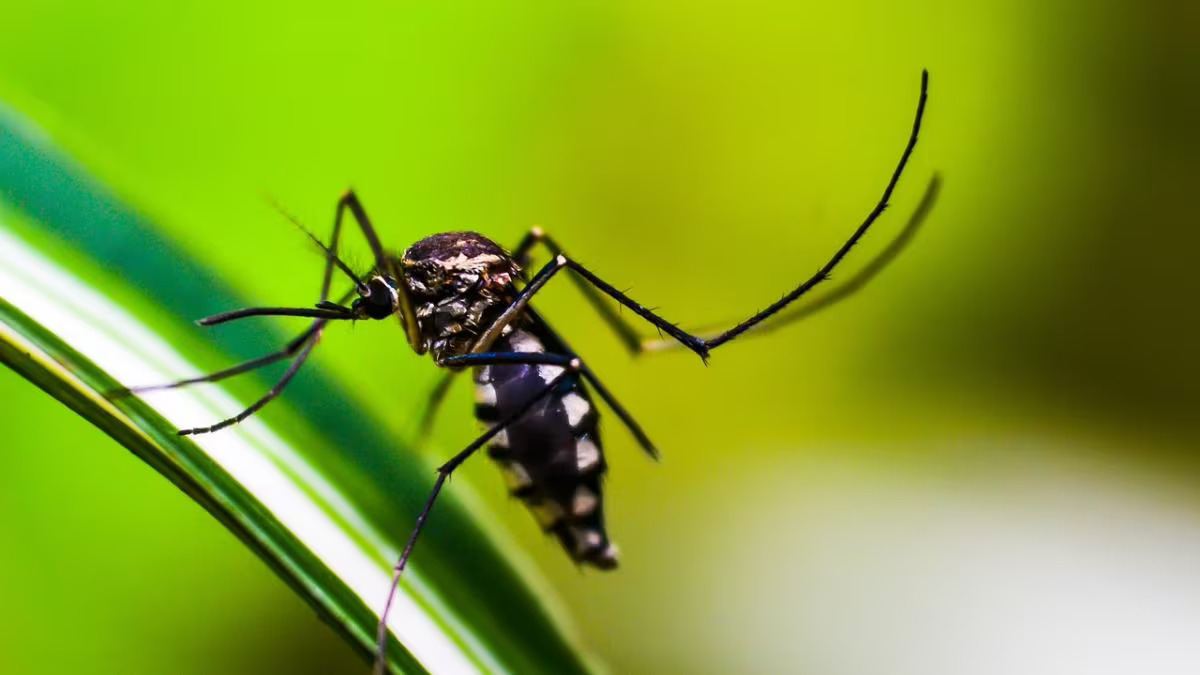Home>Gardening News and Trends>Latest News>What Color Light Repels Insects


Latest News
What Color Light Repels Insects
Modified: January 22, 2024
Discover the latest news on what color light repels insects. Learn about effective insect repellent strategies that can help protect your home and outdoor spaces.
(Many of the links in this article redirect to a specific reviewed product. Your purchase of these products through affiliate links helps to generate commission for Chicagolandgardening.com, at no extra cost. Learn more)
Table of Contents
Introduction
As the warm weather approaches, so do the unwelcome guests: insects. Mosquitoes, flies, and other buzzing pests can quickly turn a pleasant outdoor gathering into a buzzing frenzy. While there are many ways to combat these pests, one often overlooked method is using light to repel them.
Insects are naturally attracted to light sources, and understanding how different colors of light affect their behavior can help us devise strategies to keep them at bay. In this article, we will explore the science behind why insects are drawn to light and delve into the intriguing world of insect perception. We will also discuss the best colors of light to repel insects and how this knowledge can be practically applied.
So why exactly are insects so attracted to light? The answer lies in their innate navigational mechanisms. Many insects rely on celestial cues to navigate, with the moon acting as a primary point of reference. Artificial light sources, such as streetlights or porch lights, can confuse these insects. They become disoriented and are drawn towards the light, leading them away from their intended path.
But why does the color of light matter? It turns out that different wavelengths of light can have different effects on insects. Various studies have shown that certain colors are more attractive to insects, while others are less appealing. By understanding these preferences, we can strategically choose light colors that repel insects and create a more insect-free environment.
By leveraging our understanding of insect perception and the influence of light colors, we can develop practical applications to keep insects at bay. From selecting the right outdoor lighting to using specialized insect-repellent bulbs, there are numerous ways to harness the power of light to repel pests and enjoy a more peaceful outdoor experience.
So, let’s explore the fascinating world of insect behavior and discover how the right colors of light can help us repel these pesky intruders.
Why Insects are Attracted to Light
It’s a common sight to see insects swarming around light sources, especially during warm summer evenings. But what exactly draws these pests towards light? The answer lies in their unique evolution and navigational strategies.
Insects, especially nocturnal ones, rely on various cues to navigate their surroundings. One crucial factor is celestial navigation, where they use the moon, stars, and other celestial bodies as points of reference. These celestial cues help insects maintain a straight flight path and reach their intended destination.
Artificial light sources, such as bulbs or lamps, can disrupt this natural navigation system. When insects encounter artificial light at night, they become disoriented and are easily lured towards the source. This phenomenon, known as phototaxis, explains why insects are so strongly attracted to lights.
While scientists are still unraveling the intricacies of phototaxis, it’s believed that insects perceive artificial lights as potential light sources for orientation. In the case of a light bulb, the brightness and warmth may mimic the sun or the moon, leading insects to mistake it for a celestial body and triggering their navigational instincts.
Additionally, certain insects, such as mosquitoes, are also drawn to light because it acts as a secondary indicator of potential hosts. Mosquitoes rely partially on visual cues to locate their hosts, and sources of light often signal the presence of warm-blooded animals. These pests are naturally attracted to the heat and carbon dioxide emitted by humans and animals, and light sources increase the chances of finding a potential meal.
Furthermore, some research suggests that insects are attracted to certain wavelengths of light based on their natural habitat. For example, insects that primarily reside in open fields or near bodies of water might be more attracted to bright white lights, mimicking the light patterns in their natural environment.
Overall, the attraction of insects to light is a complex interplay of their natural navigational mechanisms, their perception of artificial light as a potential celestial body, and the connection between light and the presence of hosts or suitable habitats. Understanding these factors is key to devising effective strategies to repel insects and create a more pest-free environment.
How Different Colors of Light Affect Insects
It may come as a surprise, but insects don’t perceive all colors of light in the same way. Different wavelengths of light can elicit varied responses from these tiny creatures. Understanding how different colors affect insects can help us choose the most effective light sources for repelling them.
Studies have shown that insects are particularly attracted to ultraviolet (UV) light. This type of light has a shorter wavelength and is often emitted by traditional incandescent bulbs. UV light is closer to the light spectrum that many insects, like mosquitoes, are naturally drawn to. Therefore, using bulbs that emit a high amount of UV light may inadvertently attract more insects rather than repel them.
On the other end of the spectrum, blue and white light can also attract insects. High-intensity and bright white lights, commonly used in outdoor lighting, are more likely to attract flying insects. This is due to their similarity to daylight, which insects associate with activity and foraging. Blue light, specifically, is particularly attractive to certain insects, including fruit flies and horseflies.
In contrast, certain colors of light are less attractive to insects. Yellow and amber light are known to repel or minimize insect attraction. These colors have longer wavelengths and are less similar to the natural light spectrum that insects are drawn to. Using yellow bug lights or amber-colored bulbs can help reduce the number of insects swarming around an area.
Red light, with its longer wavelength, has been found to have the least attraction for insects. It is often used in specialized insect traps and repellent devices. Many insects, such as mosquitoes and fruit flies, show minimal interest in red light. This makes it a suitable option for lighting outdoor areas where insects are a major concern.
It’s important to note that the exact preferences for different colors of light can vary depending on the species of insects. Some insects may be attracted to certain colors, while others may be repelled by them. Additionally, the intensity and brightness of the light source can also influence insect behavior.
By understanding how different colors of light affect insects, we can strategically choose lighting solutions that minimize insect attraction and create a more comfortable outdoor environment. Whether it’s using yellow bug lights, red bulbs, or other insect-repellent options, tailoring the light color to repel insects can make a noticeable difference in minimizing pest presence.
The Best Colors to Repel Insects
When it comes to repelling insects, certain colors of light have been found to be more effective than others. By choosing the right color of light, you can significantly reduce the number of pests buzzing around. Let’s explore the best colors to repel insects and create an environment that is less appealing to these unwanted guests.
Yellow and amber are often considered the best colors to repel insects. These warm and soft hues have longer wavelengths and are less attractive to many flying insects. Yellow bug lights or amber-colored bulbs can be used in outdoor lighting fixtures to minimize insect attraction. These lights are particularly effective in repelling mosquitoes and other light-sensitive pests.
Another color that repels insects is red. Red light has the longest wavelength and is least attractive to many insect species. It is commonly used in specialized insect traps and repellent devices. By utilizing red light, you can create a more insect-repellent environment while still maintaining visibility.
On the flip side, blue and white lights tend to attract insects. These colors, with their similarity to daylight, can confuse insects and draw them towards the light source. Using high-intensity and bright white lights should be avoided in outdoor areas where insects are a problem. Blue lights, in particular, can attract certain insect species, such as fruit flies and horseflies.
It’s worth noting that the intensity and brightness of the light can also impact insect attraction. Dimming the lights or using lower wattage bulbs can make them less appealing to insects. Additionally, reducing the overall amount of light in the area can help minimize insect activity.
In some cases, a combination of colors can be used strategically to repel insects. For example, installing yellow bug lights in outdoor fixtures and using red lights in specific areas can create a multi-pronged approach to deter pests. Experimenting with different color combinations can help find the most effective solution for your specific insect problem.
While choosing the right color of light is important, it’s essential to remember that no method is foolproof in completely eradicating insects. It’s always a good idea to combine light repellent strategies with other insect control measures, such as using insect repellents, removing standing water sources, and maintaining a clean and tidy outdoor space.
By incorporating the best colors to repel insects into your lighting choices, you can create a more comfortable and pest-free environment. Whether it’s using yellow bug lights, red bulbs, or a combination of strategies, these color choices can significantly reduce the presence of insects and allow you to enjoy your outdoor space without the constant buzzing and biting.
The Science Behind Insect Perception of Light Colors
The way insects perceive and respond to different colors of light is rooted in their unique visual systems. Understanding the science behind insect perception can shed light on why certain colors are more attractive or repellent to these tiny creatures.
Insects have specialized photoreceptor cells in their eyes that allow them to perceive different wavelengths of light. These photoreceptor cells, known as ommatidia, are sensitive to specific ranges of the light spectrum. For example, some insects have photoreceptor cells that are more sensitive to ultraviolet (UV) light, while others may be more responsive to longer wavelengths, such as red or infrared light.
Research has shown that certain insects, like mosquitoes, are most attracted to shorter wavelengths of light, including UV and blue light. These colors are closer to the natural light spectrum that insects are accustomed to, particularly during dawn and dusk. Insects perceive these colors as cues for activity, foraging, or mating opportunities.
On the other hand, longer wavelengths of light, such as yellow, amber, and red, are less attractive to insects. This is because their photoreceptor cells are less sensitive to these colors. Insects perceive these longer wavelengths of light as dimmer and less stimulating.
The perception of light colors can also differ among various insect species. For instance, fruit flies are strongly attracted to blue light, while mosquitoes are more attracted to UV light. The preference for different colors is often influenced by the ecological niche and natural habitat of each species.
It’s also important to consider the role of brightness and intensity in insect perception. Bright lights, regardless of their color, can be highly attractive to insects. This is because brighter lights simulate the intensity of daylight and can lead insects to mistake the light source for natural sunlight or celestial bodies they use for navigation.
By understanding the science behind insect perception of light colors, we can strategically choose lighting solutions that either attract or repel insects. This knowledge enables us to create environments that are less appealing or confusing to insects, reducing their presence and potential nuisances.
It’s worth noting that while color plays a significant role in insect attraction, it is not the sole factor. Other environmental cues, such as heat, humidity, and odor, also contribute to insect behavior and can override the influence of light color. Therefore, a holistic approach to insect control is necessary, incorporating multiple strategies for effective pest management.
By harnessing our understanding of insect perception and light color, we can develop lighting solutions that minimize insect attraction and create more comfortable, insect-free spaces for both outdoor and indoor environments.
Practical Applications of Using Repellent Light Colors
The knowledge of how different colors of light affect insect behavior can be put into practical use to create more insect-resistant environments. By strategically using repellent light colors, we can minimize insect attraction and reduce the nuisance and health risks associated with these pests.
One practical application is to use yellow bug lights or amber-colored bulbs in outdoor lighting fixtures. These warm and soft-hued lights have longer wavelengths and are less attractive to many flying insects. By replacing standard white bulbs with yellow or amber ones, you can significantly reduce the number of insects swarming around your outdoor spaces.
Another effective approach is using red light in specific areas to deter insects. Red light has the longest wavelength and is the least attractive to many insect species. It can be used in porch lights, garden spotlights, or any other outdoor lighting where you want to discourage insect activity. By strategically placing red lights, you can create zones that are less appealing to pests, allowing you to enjoy your outdoor areas without constant buzzing and biting.
For larger outdoor spaces, such as parks or open fields, a combination of repellent light colors can be employed. Using a mix of yellow, amber, and red lights can help create a more comprehensive insect-repellent environment. Deploying different colors strategically can target a wider range of pest species and increase the overall effectiveness of the lighting system.
It’s important to note that the effectiveness of repellent light colors can be influenced by other factors, such as light intensity and the surrounding environment. Dimming the lights or using lower wattage bulbs can make them less appealing to insects. Additionally, reducing other attractants, such as standing water sources or strong odors, can further enhance the repellent effects of light colors.
In indoor settings, choosing light fixtures with built-in insect-repellent features can be beneficial. These fixtures are specifically designed to emit colors that deter insects. Using such fixtures in areas prone to insect infestation, such as kitchens or entryways, can reduce the presence of pests and improve overall hygiene.
It’s worth mentioning that while repellent light colors can help minimize insect attraction, they are just one component of a comprehensive pest management strategy. Using repellents, maintaining a clean environment, and sealing potential entry points are also essential in keeping insects at bay.
By employing the practical applications of repellent light colors, we can create more pleasant and insect-free environments. Whether it’s using yellow bug lights, red bulbs, or a combination of strategies, incorporating repellent light colors can significantly reduce the presence of insects and enhance our outdoor and indoor experiences.
Conclusion
Light plays a significant role in insect behavior, and understanding the science behind how different colors of light affect insects can help us create more insect-repellent environments. By strategically utilizing repellent light colors, such as yellow, amber, and red, we can significantly reduce the attraction of insects and minimize their presence in our surroundings.
Insects are naturally drawn to light sources, mistaking them for celestial bodies or potential hosts. However, not all colors of light hold the same appeal for insects. Certain colors, such as yellow, amber, and red, have longer wavelengths and are less attractive to many insect species. By using bulbs and fixtures that emit these colors of light, we can discourage insects from swarming around our outdoor spaces.
Practical applications of repellent light colors include using yellow bug lights or amber-colored bulbs in outdoor lighting fixtures, and strategically placing red lights in specific areas to deter insects. Combining different colors of light can target various pests and enhance the overall effectiveness of the lighting system.
It is important to note that while repellent light colors can help minimize insect attraction, they are just one component of a comprehensive pest management strategy. Other measures, such as using insect repellents, maintaining a clean environment, and sealing entry points, should also be employed to maximize the effectiveness of insect control.
By leveraging our understanding of insect perception and the impact of light colors, we can create more pleasant and insect-free environments both indoors and outdoors. We can enjoy our outdoor spaces without constant buzzing and biting, and maintain a pest-free atmosphere in our homes and workplaces.
So, the next time you light up your outdoor areas or choose lighting fixtures for your interior space, consider the power of repellent light colors. Harnessing the science behind insect perception can help us repel these pesky intruders and ensure a more comfortable and enjoyable environment for all.









